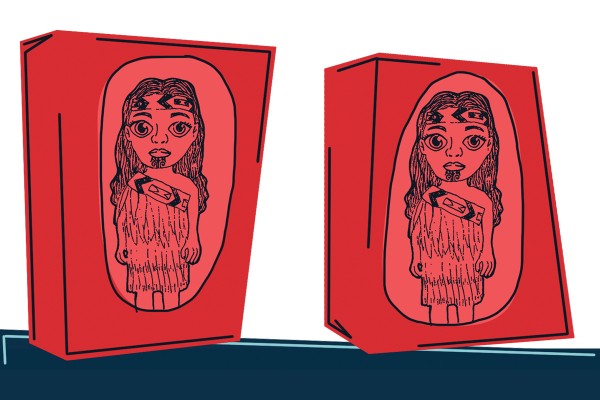In an era where diversity is celebrated, Hollywood has found a new fascination – move over superheroes and intergalactic battles, because Māori culture has become the latest trend in the global entertainment industry. But are we witnessing a genuine celebration of diversity, or is it just another case of cultural appropriation masked as appreciation?
Don’t get me wrong, the problem here isn’t that te ao Māori shouldn't be shared with the world. But when Hollywood cherry-picks cultural elements, slaps them onto alien worlds and underwater kingdoms and calls it a day, it’s almost equivalent to adding soy sauce to spaghetti – it might taste okay, but it's just not right. And besides, who wants to settle for the dusty taste of mediocrity? But hey, who needs originality when you can borrow an entire culture for a box-office hit?
Aquaman, the aquatic superhero who spun waves across DC's cinematic universe, features Jason Momoa as the titular character. The movie sports a plethora of not-so-subtle Māori cultural references. And while Momoa himself is of Native Hawaiian descent, the decision to deck out Aquaman in a mishmash of Polynesian cultural signifiers reads more like lazy appropriation than an actual homage. ‘Diversity’ becomes a buzzword and cultural representation is a hot commodity, as it seems no culture is immune to being mined for cinematic gold.
But it's not just the films alone that warrant such scrutiny; it's the broader phenomenon of shameless cultural commercialisation that accompanies them. Take, for example, the toki, a traditional Māori carving featured prominently in Aquaman's marketing and embraced fervently by its fanbase as a collectible item. Suddenly, what was once a sacred symbol of Māori culture becomes simply just another trinket to add to one's collection, stripped of its cultural context and significance. Nothing says “cultural appreciation” quite like minimising sacred cultural symbols into mass-produced trinkets for fanatics to drool over at comic conventions. Tasteless, and unseasoned.
I’m sure the producers “mean well”, and yeah, perhaps we as Māori should just sit back and soak it up, but films like Avatar and the recent Aquaman often work to sideline Māori voices and narratives in favour of watered-down, palatable versions packaged for quick digestion. And while Hollywood pats itself on the back for its token nods to diversity, it also conveniently overlooks the fact that true representation involves more than peppering in some exotic-sounding dialogue in an effort as skin-deep as the few tattoos that have been slapped onto an A-list celeb.
James Cameron's Avatar, long-hailed for its groundbreaking visuals and environmental themes, didn't shy away from borrowing heavily from several indigenous cultures. The Na'vi, the film's blue-skinned inhabitants, bear an uncanny resemblance to various indigenous peoples, with their language, customs, and even facial tattoos echoing cultures from across the globe, with a particular focus on reimagining all things Māori.
Let’s be real: it’s clear that Aquaman speaks dearly to the hearts of many, allowing Polynesians to find common ground with an otherwise fictional character. There’s no debating that, and fairly so. But how can a film that aims to represent, truly be representative of Māori and the wider Pacific when said people are almost entirely absent from the screen? No matter how often Dwayne Johnson tries to perform the haka in his work, it just isn’t cutting it anymore. For God’s sake, it’s not 2010 anymore!
True representation necessitates the inclusion of Māori voices, not only in front of the camera but also behind it, ensuring that the authenticity and nuances of their experiences are accurately portrayed. At the end of the day, who else could tell the story better? And while it will always be cool to actually see te ao Māori thriving in theatres, our culture deserves to develop beyond an onscreen hongi. Where is the depth?
Iri, a fellow Northlander, spoke strongly against the online discourse regarding the release of both blockbuster films. “The most common thing I’ve heard from other Māori is that ‘at least we’re finally being recognised’, but really, we’re just perpetuating an unsung point that not only Māori but POC should be actively grateful for just being seen,” she shared. “That’s problematic. We’re not being ‘recognised’ if you need an A-list celeb to sell the story every time.”
As for audiences, it's essential that we approach media consumption with a critical eye and an awareness of the broader implications of appropriation and commercialisation. There is so much more to te ao Māori than cinematic nods that barely break the surface of a living, breathing culture. So while it's tempting to get swept up in the spectacle of Hollywood blockbusters, we must remember that behind the glitz and glamour lies a deeper, more troubling reality of exploitation and cultural erasure.



